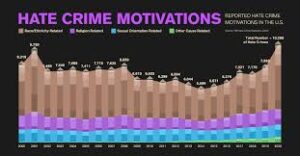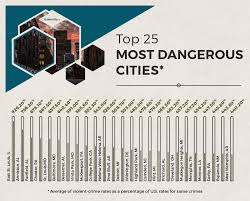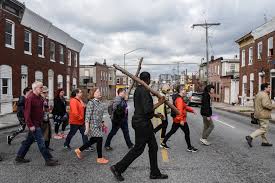Introduction

Violent crimes in the United States typically include offenses such as homicide, assault, robbery, and sexual assault. Here are some key points.
Violent crime is a significant concern in the United States, encompassing a range of offenses that pose threats to public safety and individual well-being. Defined by the FBI as offenses involving force or the threat of force against victims, violent crimes include homicide, assault, robbery, and sexual assault. Understanding the dynamics of violent crime is essential for policymakers, law enforcement agencies, communities, and individuals striving to prevent and address these offenses.
Homicide:
Homicide rates can vary greatly by region and over time. They are often broken down into categories such as murder and manslaughter. Factors influencing homicide rates include socioeconomic conditions, access to firearms, drug activity, and law enforcement policies.
Assault:

Assault refers to a wide range of violent offenses, from simple assaults involving threats or minor physical harm to aggravated assaults involving serious injury or the use of a weapon. Assault rates may fluctuate due to factors such as changes in reporting practices or societal tensions.
Robbery:
Robbery involves taking property from another person through force or the threat of force. Like other violent crimes, robbery rates can be influenced by economic conditions, community policing strategies, and the availability of resources for crime prevention.
Sexual Assault:

Sexual assault encompasses a range of offenses, including rape, sexual battery, and sexual coercion. It’s often underreported due to stigma, fear of retaliation, and mistrust of law enforcement. Efforts to combat sexual violence include education, advocacy, and improved support services for survivors.
Law enforcement agencies, such as the FBI, compile and publish data on violent crime rates through the Uniform Crime Reporting (UCR) program. However, it’s essential to interpret these statistics carefully, considering factors like changes in reporting practices, population demographics, and law enforcement strategies.
For the most accurate and up-to-date information on violent crime in the USA, it’s best to consult official government sources or reputable research organizations
Trends Over Time:
While there have been fluctuations, overall, violent crime rates in the United States have shown a general downward trend over the past few decades. This decline can be attributed to various factors, including changes in policing strategies, advancements in technology, economic conditions, and societal changes.
Demographic Patterns:

Certain demographic groups may be disproportionately affected by violent crime. Factors such as age, gender, race, socioeconomic status, and geographic location can influence both victimization and perpetration rates.
Urban vs. Rural Disparities:
Violent crime rates often vary between urban, suburban, and rural areas. Historically, urban areas have tended to have higher rates of violent crime due to factors such as population density, poverty, gang activity, and drug trafficking. However, rural areas may face unique challenges, including limited access to law enforcement resources and social services.
Impact of Legislation:
Changes in legislation, such as gun control laws and sentencing reforms, can have a significant impact on violent crime rates. For example, studies have shown correlations between stricter gun laws and lower rates of gun-related violence.
Community Responses:
Communities employ various strategies to prevent and address violent crime, including community policing initiatives, neighborhood watch programs, youth outreach programs, and violence intervention programs. Collaboration between law enforcement agencies, government agencies, community organizations, and residents is often essential for effective crime prevention and reduction efforts.
International Comparisons:

Violent crime rates in the USA are often compared to those in other countries. However, making direct comparisons can be challenging due to differences in definitions, reporting practices, legal systems, and cultural factors.
Challenges of violent crime
Over the years, the United States has grappled with the multifaceted challenge of violent crime, with rates fluctuating over time and varying across regions and demographic groups. While there have been periods of decline, particularly since the 1990s, when crime rates peaked, and numerous factors have influenced these trends.
Understanding the complex factors
That contribute to violent crime rates is crucial for developing effective policies and interventions to prevent and address these offenses. It requires a multidisciplinary approach involving law enforcement, government agencies, community organizations, researchers, and other stakeholders.
The availability and prevalence of firearms also play a significant role in violent crime in the USA. The country has one of the highest rates of gun ownership globally, and firearms are involved in a substantial portion of homicides and other violent incidents. Debates over gun control laws, background checks, and measures to address illegal gun trafficking are central to discussions on reducing violent crime.
Furthermore,

demographic factors such as age, gender, race, and ethnicity can influence both victimization and perpetration rates. Young males, particularly those in urban areas and marginalized communities, are disproportionately affected by violent crime. Additionally, disparities in access to resources, experiences of discrimination, and interactions with law enforcement can contribute to differential experiences of violence among various demographic groups.
Conclusion
Law enforcement agencies, government entities, community organizations, and individuals employ a range of strategies to prevent and address violent crime. These include community policing initiatives, violence prevention programs, interventions targeting at-risk youth, victim support services, and efforts to address underlying social and economic factors.
Despite challenges, progress has been made in reducing violent crime rates through collaborative efforts involving multiple stakeholders. However, ongoing vigilance and investment in evidence-based strategies are essential to further decrease violence and promote safer communities across the United States.



